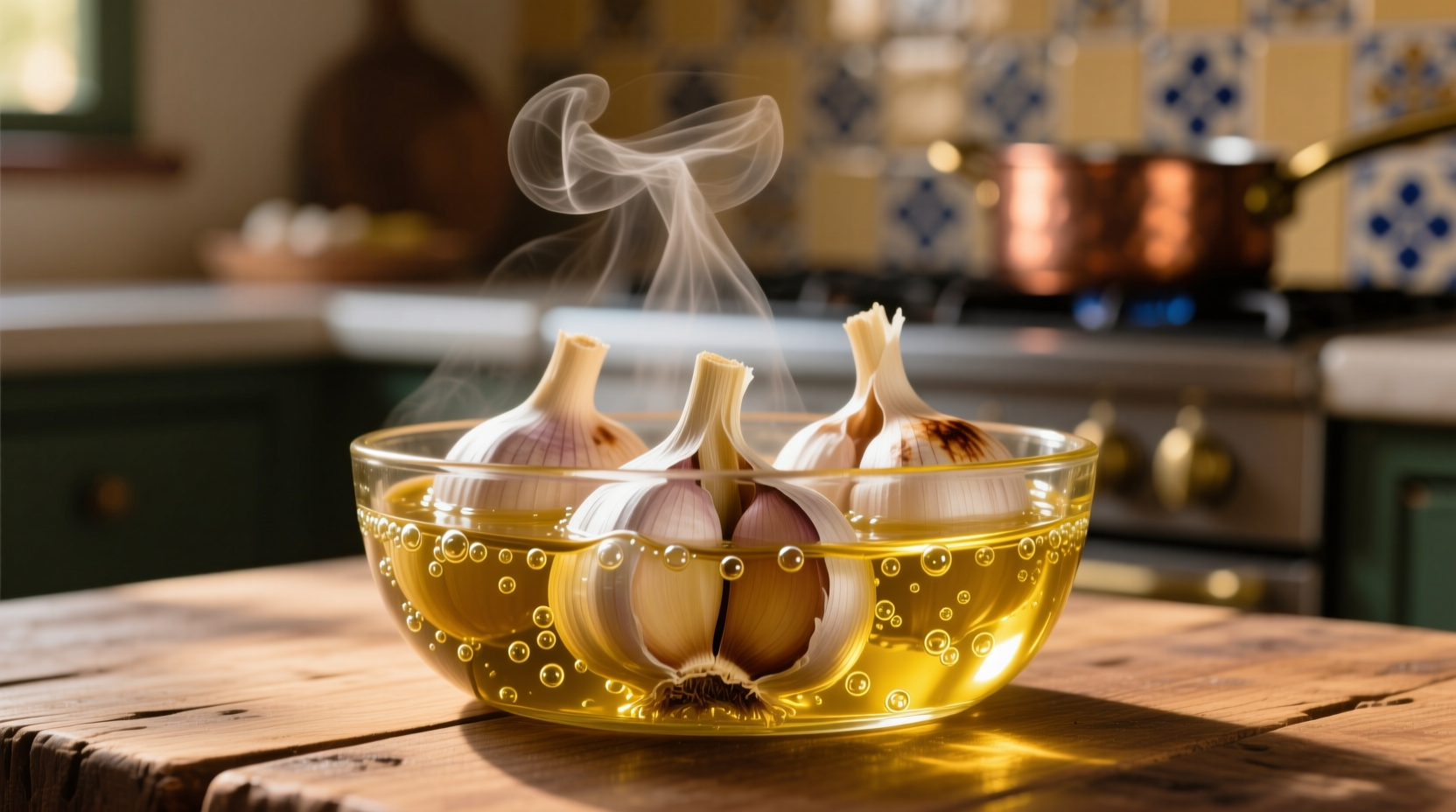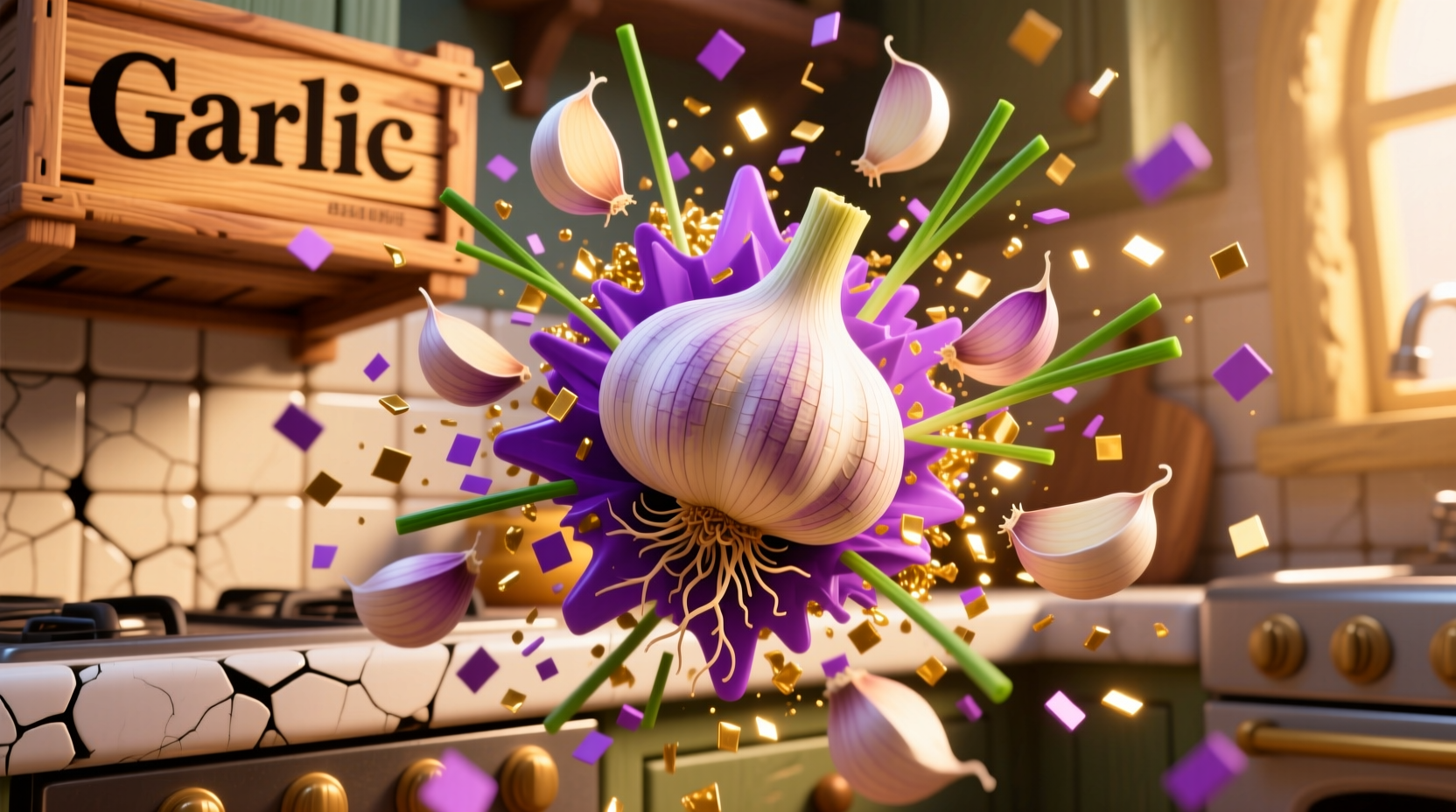Why Garlic Confit Belongs in Every Kitchen
When you search for "garlic confir," you're likely encountering a common misspelling of garlic confit—a transformative cooking technique that solves multiple kitchen challenges. Unlike raw garlic that can overpower dishes or burn easily, confit garlic delivers consistent, complex flavor without bitterness. This simple method has been used in Mediterranean cuisine for centuries and has recently gained popularity among home cooks seeking restaurant-quality results.
Your Complete Garlic Confit Roadmap
Follow this practical guide through each stage of your garlic confit journey—from understanding the technique to incorporating it into your daily cooking routine.
Understanding the Magic: What Makes Confit Different
Garlic confit isn't just cooked garlic—it's a flavor alchemy process. As garlic simmers gently in oil (typically between 160-180°F), enzymatic reactions break down harsh compounds while preserving beneficial properties. The result? Creamy cloves with a sweet, nutty profile that spreads like butter and dissolves seamlessly into sauces.
| Characteristic | Raw Garlic | Garlic Confit |
|---|---|---|
| Flavor Profile | Sharp, pungent, spicy | Sweet, mellow, nutty |
| Digestibility | Can cause discomfort | Gentler on digestion |
| Cooking Stability | Burns easily | Heat-stable, won't burn |
| Storage Life | Weeks (whole bulb) | 3-4 weeks refrigerated |
Gathering Your Ingredients: Quality Matters
The beauty of garlic confit lies in its simplicity—only three components determine success:
- Garlic: Select firm, plump cloves from fresh bulbs (avoid pre-peeled varieties)
- Oil: Use high-quality extra virgin olive oil for Mediterranean dishes, or neutral oils like grapeseed for versatility
- Aromatics: Optional but recommended—add fresh thyme, rosemary, or a bay leaf

Step-by-Step Preparation: The Foolproof Method
Follow this precise technique for perfect results every time:
- Peel 1-2 whole garlic heads, keeping cloves intact
- Place cloves in a small saucepan with enough oil to cover completely
- Add aromatics if using (1-2 sprigs fresh herbs)
- Heat over lowest possible setting (160-180°F) for 30-45 minutes
- Watch for gentle bubbling—never allow oil to simmer vigorously
- Remove when cloves turn golden and feel soft when pierced
Professional chefs at institutions like Le Cordon Bleu emphasize temperature control as the critical factor—exceeding 185°F causes bitterness. The USDA's Food Safety and Inspection Service confirms that proper low-temperature cooking preserves garlic's beneficial compounds while eliminating harsh enzymes.
Safety First: Proper Storage Guidelines
Garlic-in-oil preparations require careful handling to prevent botulism risk. Follow these evidence-based safety protocols:
- Always refrigerate garlic confit—never store at room temperature
- Use within 3-4 weeks for optimal safety and quality
- Keep cloves fully submerged in oil at all times
- Add 1-2 tablespoons of lemon juice per cup of oil to increase acidity
The Centers for Disease Control and Prevention (CDC) reports that proper refrigeration below 38°F significantly reduces botulism risk in garlic-oil preparations. When stored correctly, garlic confit presents no greater risk than other preserved foods.
Culinary Applications: Transform Your Everyday Cooking
Garlic confit elevates dishes in ways raw garlic cannot. Here's how to incorporate it:
- Spread: Mash cloves with a fork for instant garlic bread topping
- Sauces: Whisk into vinaigrettes or melt into pan sauces
- Roasts: Tuck cloves around meats during final cooking stages
- Vegetables: Toss warm confit oil with roasted vegetables
- Preservation: The infused oil becomes a flavor base for future dishes
Unlike raw garlic that loses potency when cooked, confit garlic maintains its complex flavor profile through additional cooking processes. This makes it particularly valuable for dishes requiring extended cooking times where regular garlic would burn or become bitter.
Troubleshooting Common Issues
Even experienced cooks encounter these challenges—here's how to fix them:
- Bitter garlic: Caused by excessive heat—start over at lower temperature
- Hard centers: Insufficient cooking time—continue gentle heating
- Cloudy oil: Normal reaction—strain through cheesecloth if desired
- Mold development: Discard immediately—indicates improper storage
Maximizing Your Garlic Confit Experience
For optimal results, consider these professional tips:
- Use the infused oil for cooking—it contains concentrated garlic flavor
- Add a pinch of salt during cooking to enhance flavor extraction
- Freeze excess cloves in oil for longer storage (up to 3 months)
- Experiment with different oils to match your dish's flavor profile
Food science research from the University of California, Davis confirms that the slow-cooking process in oil preserves allicin-derived compounds while transforming harsh sulfur compounds into more complex flavor molecules. This scientific basis explains why properly prepared garlic confit delivers superior culinary results compared to other garlic preparation methods.
Frequently Asked Questions
Can I use garlic confit immediately after preparation?
Yes, garlic confit can be used immediately after cooling slightly. For best flavor integration, let it rest for 1-2 hours before using. The flavor continues developing as it cools, reaching optimal complexity after 24 hours of refrigeration.
Why does my garlic confit taste bitter?
Bitterness occurs when garlic is cooked above 185°F. The ideal temperature range is 160-180°F. If your confit tastes bitter, the oil was too hot during preparation. Start over at a lower temperature—use a thermometer to monitor precisely.
Can I reuse the oil from garlic confit?
Absolutely—the infused oil is a valuable flavor base. Use it for sautéing vegetables, making dressings, or as a finishing oil. Store it with the garlic cloves in the refrigerator and use within 3-4 weeks for best quality and safety.
How can I tell if my garlic confit has gone bad?
Signs of spoilage include: off smells (sour or rancid), visible mold, or bubbling in the container. Properly stored garlic confit should have a sweet, nutty aroma. When in doubt, discard the entire batch—do not taste to check.
Is garlic confit healthier than raw garlic?
Both forms offer health benefits through different compounds. Raw garlic contains more allicin (antimicrobial), while confit preserves other beneficial compounds through gentle cooking. The low-temperature process maintains many antioxidants while making garlic more digestible for sensitive individuals.











 浙公网安备
33010002000092号
浙公网安备
33010002000092号 浙B2-20120091-4
浙B2-20120091-4